Much to discover: Collaborative biodiversity surveys in northern Australia
The latest Bush Blitz expedition brought together teams of biologists, including AMRI scientists, and community to better understand the biodiversity of Groote Eylandt in the Northern Territory. Dane Trembath and Dr Jodi Rowley tell us more about the amazing biodiversity in northern Australia.
It might come as a surprise to many Australians just how little we know about our country’s biodiversity. This is especially true in many of the more remote parts of northern Australia. Every year we get a slightly better understanding of the amazing biodiversity that we do have, which helps better inform vital conservation and land-use planning decisions – but we still have so much to discover! One fantastic initiative to discover Australia’s biodiversity is Bush Blitz, a program that brings together teams of biologists to help document the plants and animals of Australia. The latest Bush Blitz was held on Groote Eylandt in the Northern Territory. We found over 40 species of frog and reptile, some of which may just be scientifically undescribed species. It’s a step forward in our shared knowledge of Australia’s biodiversity, and how to best manage it into the future.

Angurugu Community Members with Jodi Rowley.
Image: Dane Trembath© Australian Museum
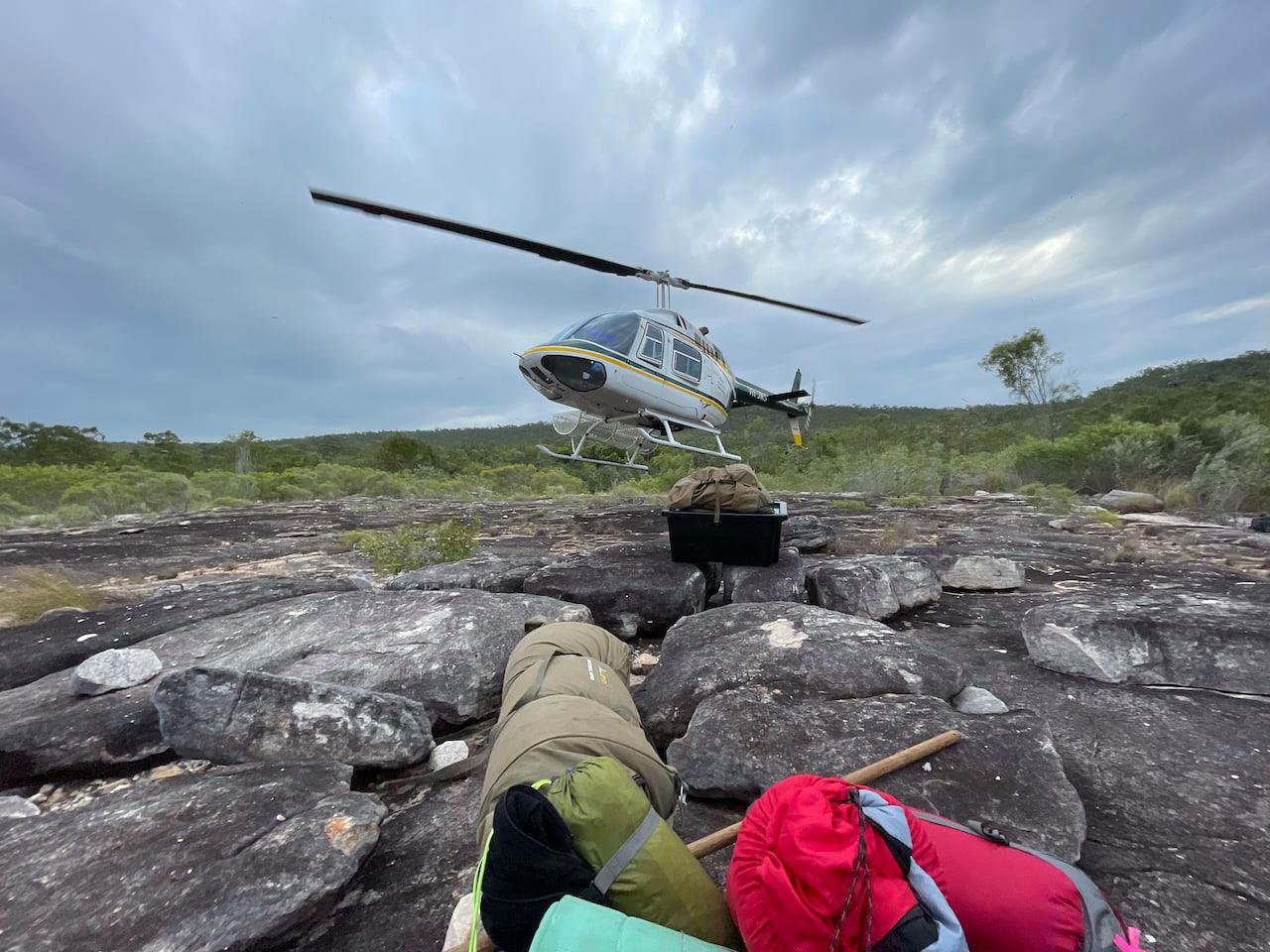
© Australian Museum
Bush Blitz expeditions have dramatically increased our knowledge of Australia’s biodiversity since in the last decade, providing new records of plants and animals across the continent, and resulting in a huge number of new species - over 1700 new species (1657 fauna and 78 flora) of Australian animals to date!
From the 14th to the 25th of June 2021, Bush Blitz joined forces with the Museum and Art Gallery of the Northern Territory, Australian Museum, Northern Territory Herbarium, Anindilyakwa Land & Sea Rangers and Traditional Owners to survey the biodiversity of Groote Eylandt. Groote Eylandt is the largest island in the Gulf of Carpentaria and the fourth largest island in Australia. Located off the eastern coast of Arnhem Land in the Northern Territory, the island has an amazing array of habitats ranging from rugged sandstone gorges to large swathes of tropical eucalypt forest. It’s also free of the introduced Cane Toad (Rhinella marina), meaning that animals impacted by the Cane Toad on the mainland, like Northern Quolls (Dasyurus hallucatus) and Monitor Lizards (Varanus spp.), are common.

Groote Eylandt from the air.
Image: Jodi Rowley© Australian Museum
Given the vast areas without any roads, access to rocky streams and remote gorges was made possible via helicopter – making our work as thorough and efficient as possible and increasing our chances of finding unknown critters. In the afternoons, we were dropped off at locations that we suspected were the best for finding frogs and reptiles and we were picked up the morning after a night of searching the terrain via torchlight. We searched for dragons, skinks and monitors in the day and frogs, snakes and geckos at night.
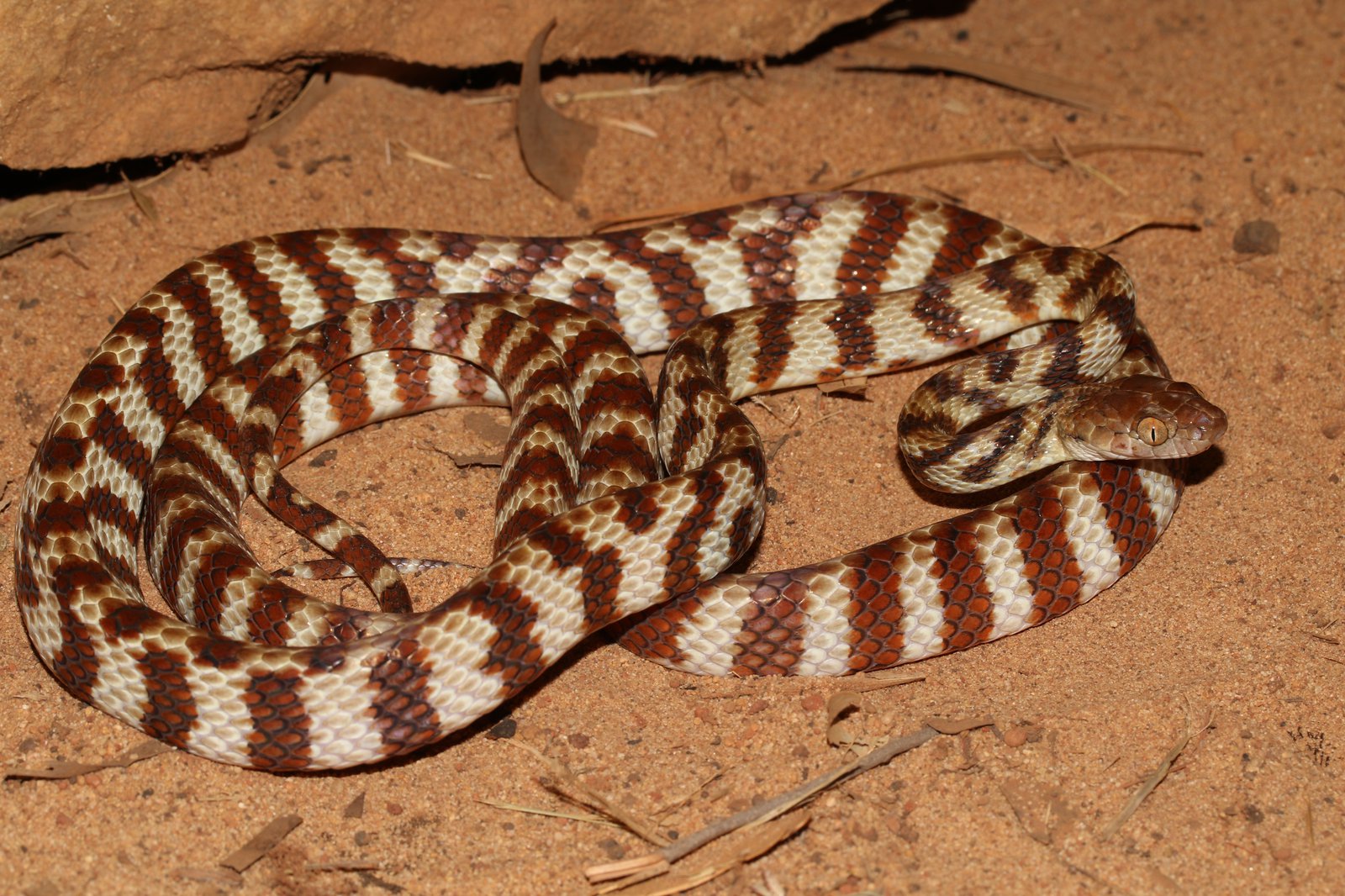
Brown Tree Snake (Boiga irregularis) / Anindilyakwa Language Name - Dumamawurra.
Image: Dane Trembath© Australian Museum
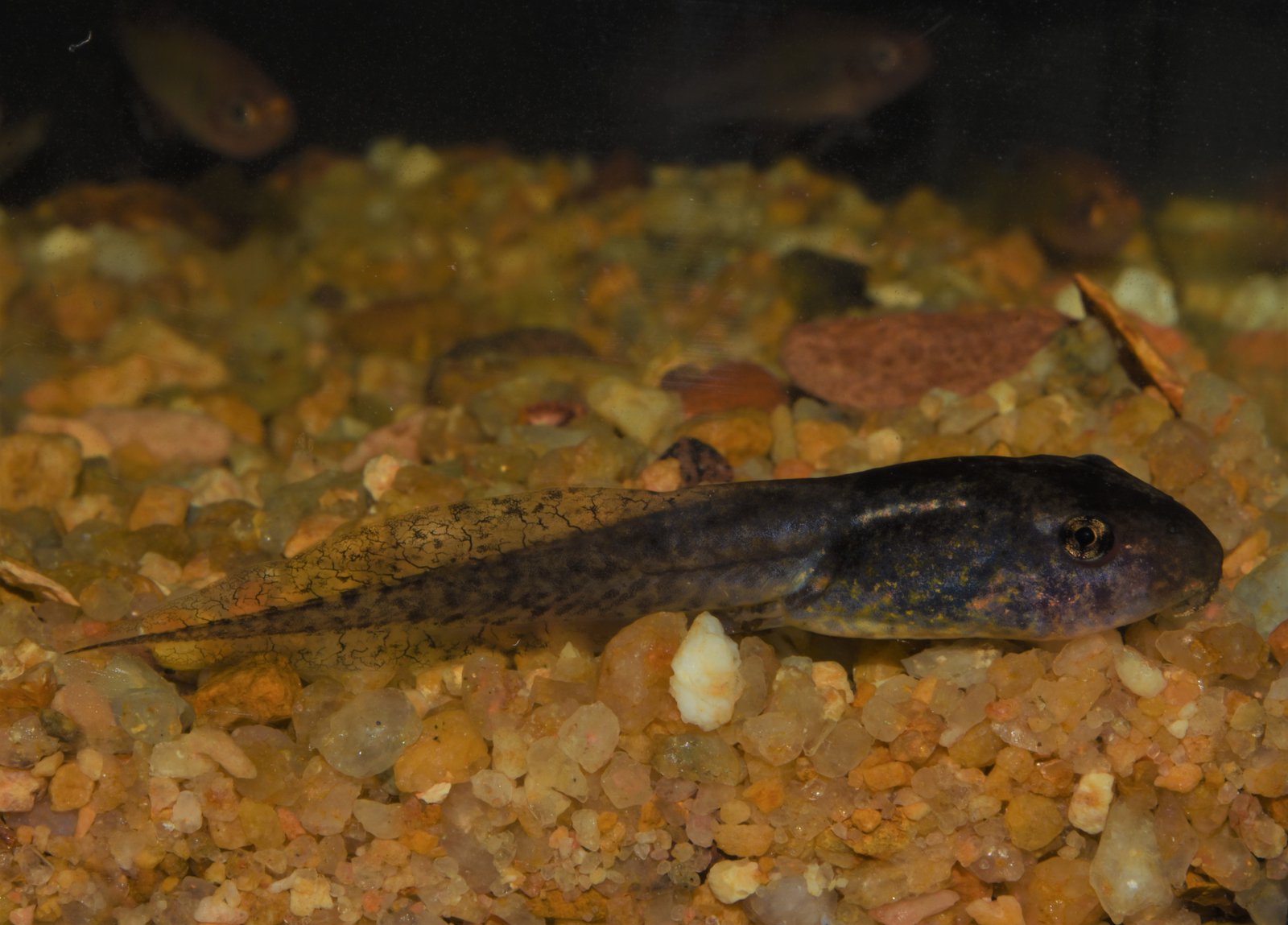
Tadpole - Anindilyakwa Language Name – Dirimba.
Image: Jodi Rowley© Australian Museum
The Bush Blitz was conducted in partnership with the Anindilyakwa Land & Sea Rangers and in consultation with the Traditional Owners of Groote Eylandt, and together we were able to survey areas never before scientifically surveyed for biodiversity. We also learnt an incredible amount about the frogs and reptiles of the island from the Rangers and community, including traditional uses, names in Anindilyakwa, and species that we unfortunately didn’t encounter during the Bush Blitz but are present on the island and we hope to see one day!
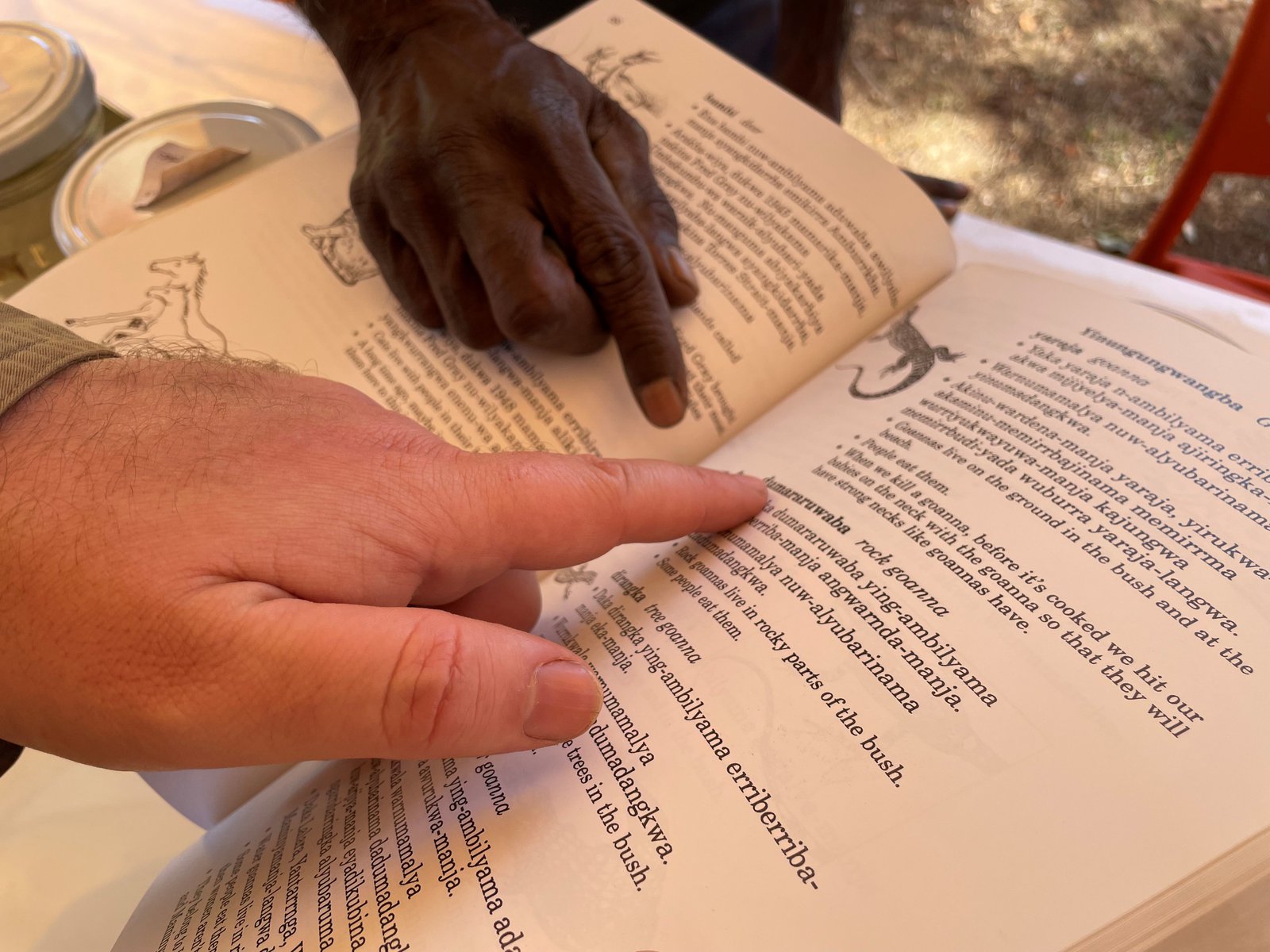
Learning traditional knowledge.
Image: Jodi Rowley© Australian Museum
Together, we recorded more than 36 reptile species and 8 frog species in one of the most thorough surveys of the island to date. Reptile finds included Groote Eylandt Marbled Velvet Geckos (Oedura nesos) which are found exclusively in sandstone outcrops on Groote Eylandt, and a range of interesting but extremely difficult to identify Geckos (Gehyra spp.), widespread throughout the island. On the amphibian front, Spaldings Rocket Frogs (Litoria spaldingi) were found throughout the island, tiny Remote Froglets (Crinia remota) were heard calling in rocky seeps, and the tiny Northern Sedge Frogs (Litoria bicolor) were scattered throughout their spiky Pandanus tree homes.
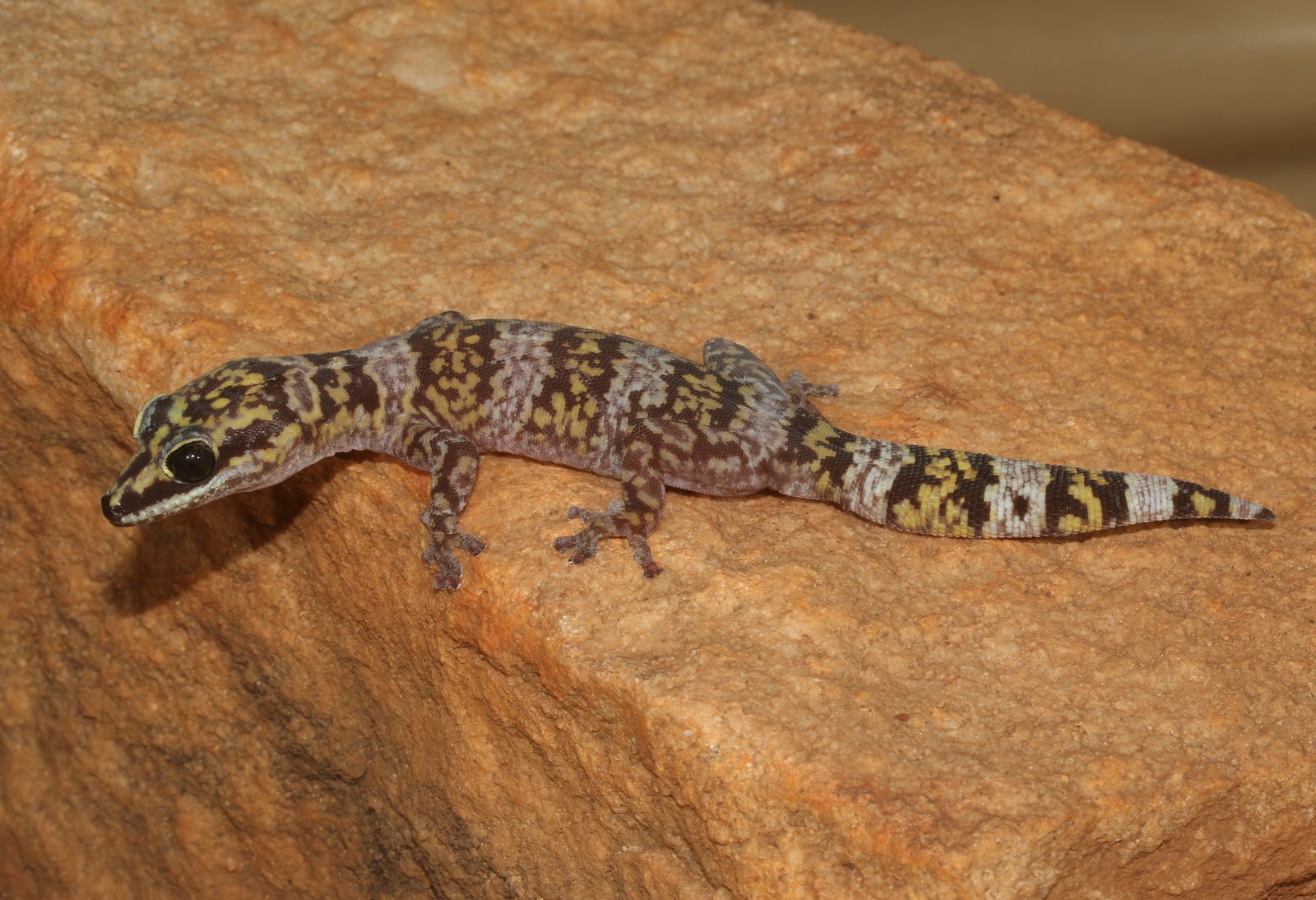
Groote Eylandt Velvet Gecko (Oedura nesos) - Anindilyakwa Language Name - Yibilyibilya.
Image: Dane Trembath© Australian Museum
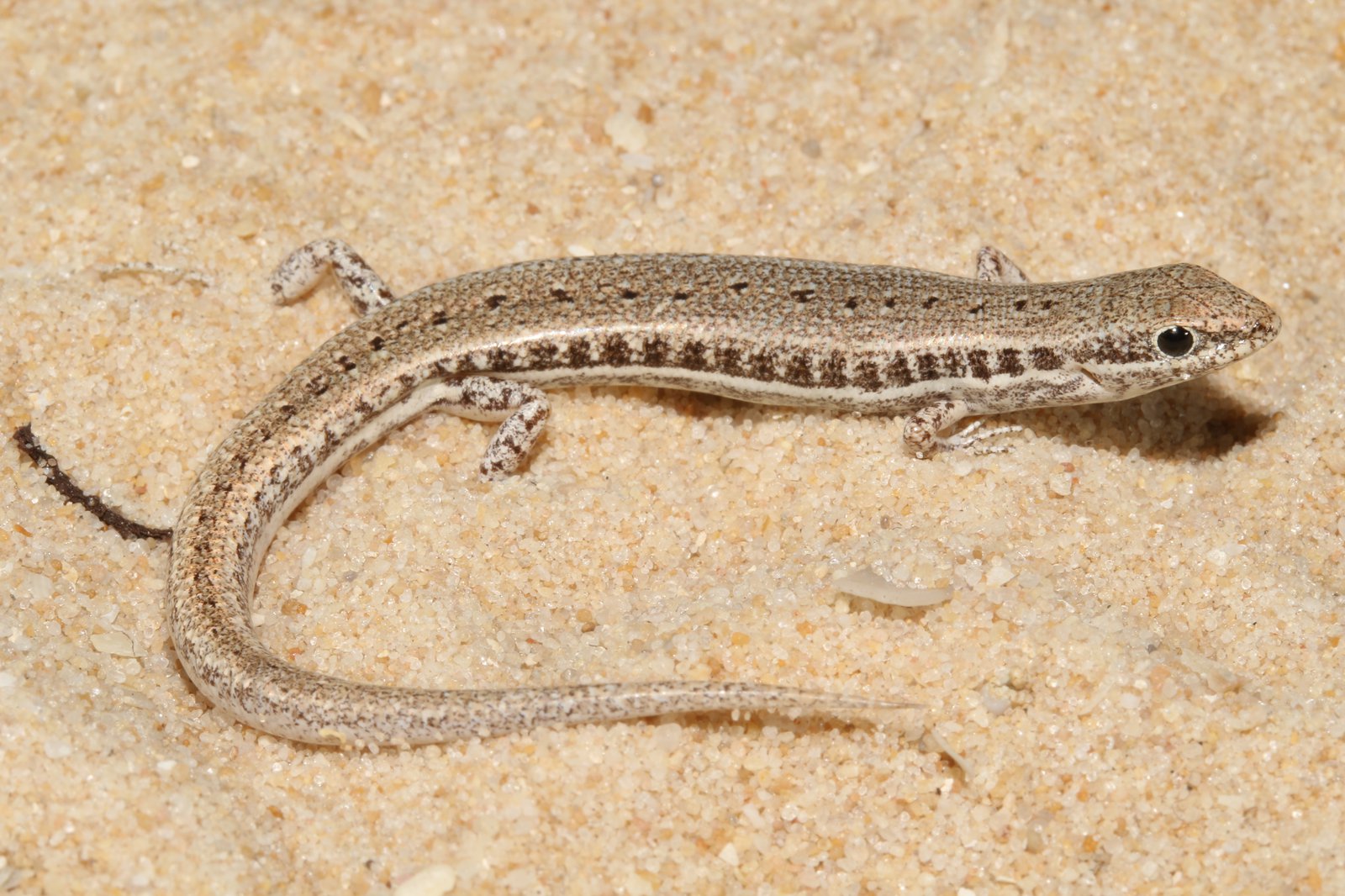
Ornate Snake Eyed Skink (Notoscincus ornatus) - Anindilyakwa Language Name – Yuwarjerra.
Image: Dane Trembath© Australian Museum
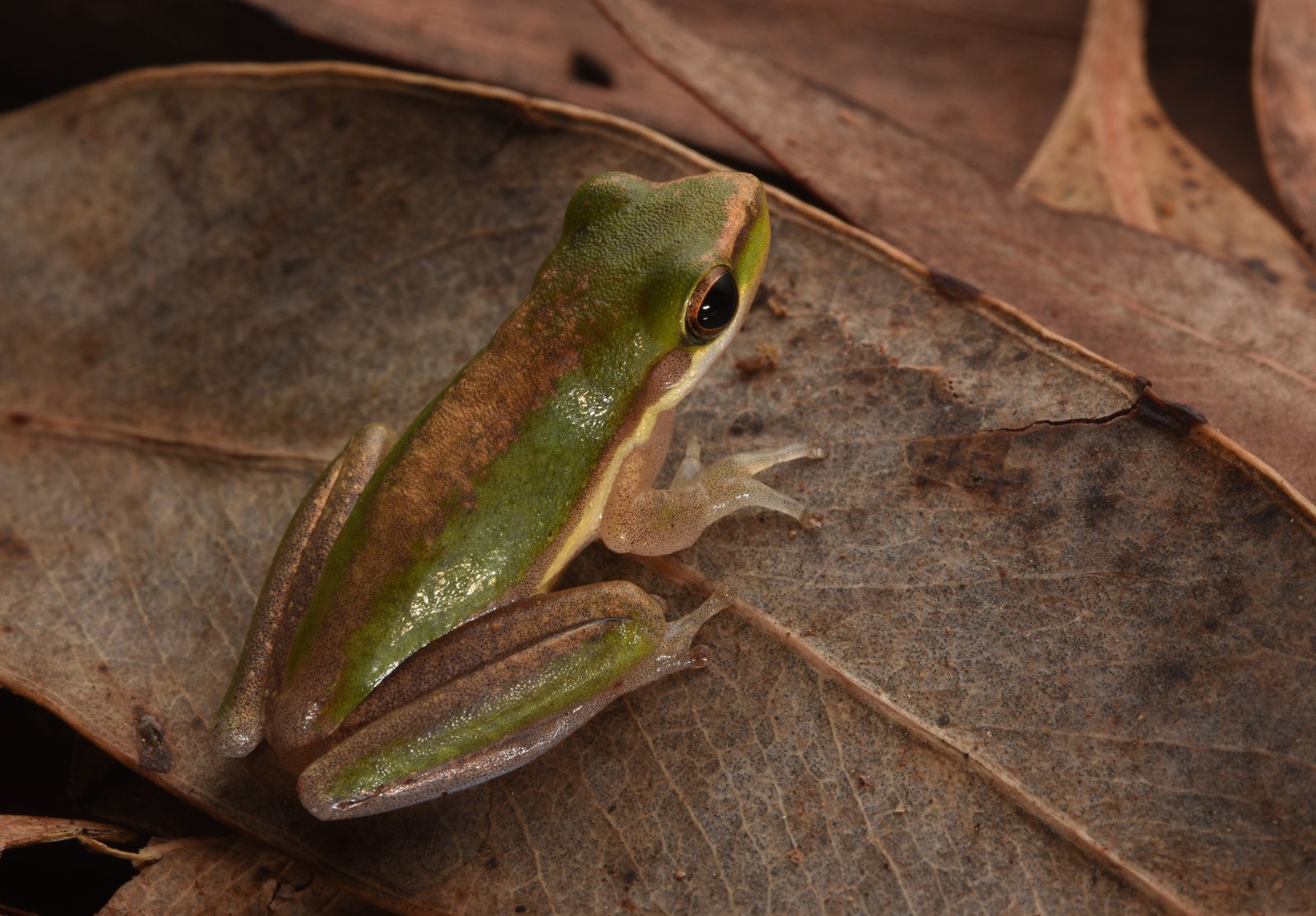
Northern Sedge Frog (Litoria bicolor) Anindilyakwa Language Name – Dilyaburnda.
Image: Jodi Rowley© Australian Museum
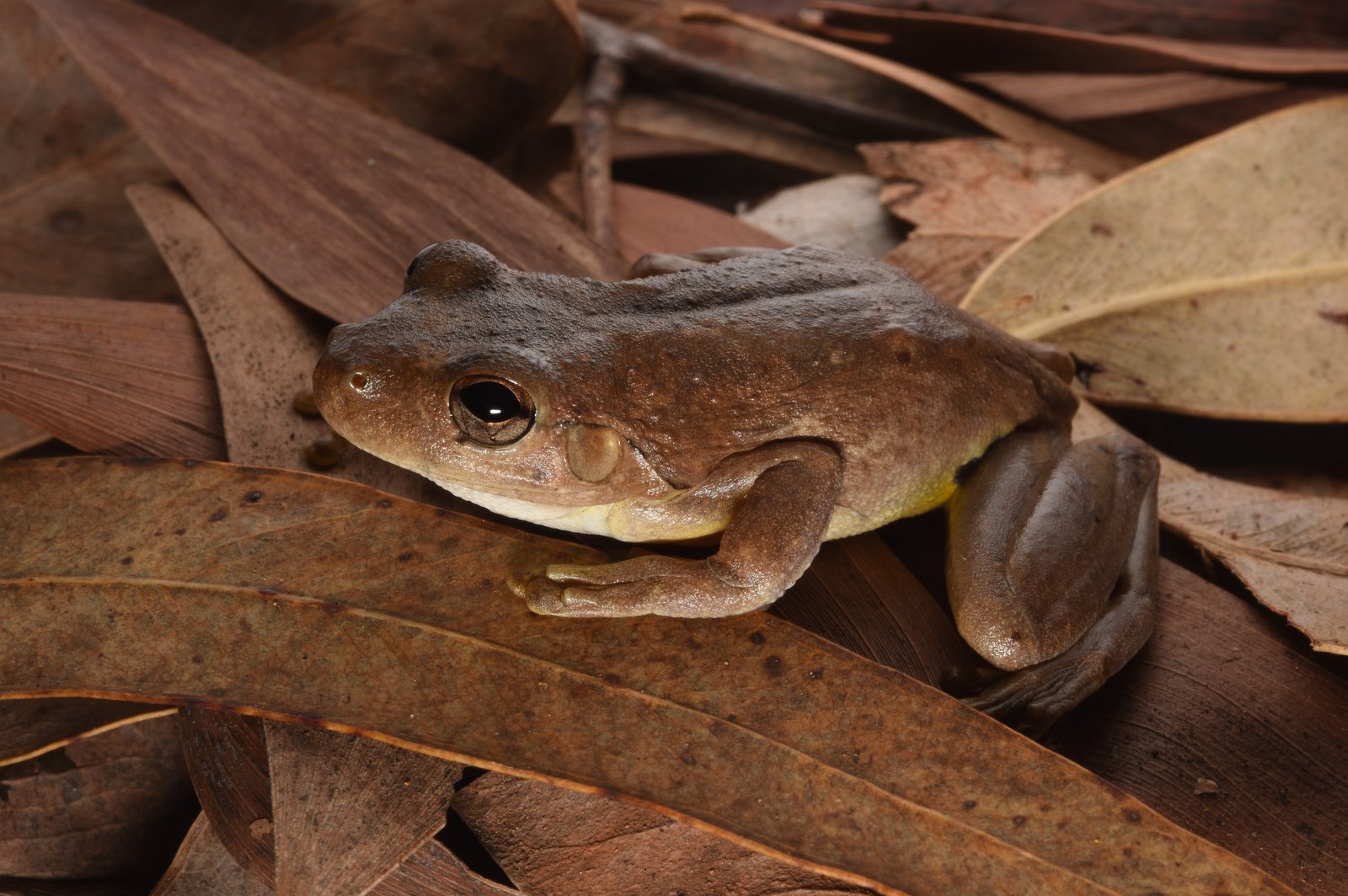
Roth’s Tree Frog (Litoria rothii) Anindilyakwa Language Name – Dilyaburnda.
Image: Jodi Rowley© Australian Museum
We found rarely reported frogs and reptiles, and suspect that some of these may be scientifically unknown. However, as so many frog and reptile species look so similar across the top end of Australia, a lot of detective work (particularly DNA analyses) will be needed before we can be sure. Stay tuned for more!
It’s incredibly important to know where different species occur, what areas hold the most biodiversity, and which species are likely to be under greatest threat. Only by knowing this can we make informed planning decisions to ensure future generations inherit a country with healthy ecosystems full of a diverse array of unique plant and animal species.
We wish to thank the Anindilyakwa Land & Sea Rangers and Traditional Owners of Groote Eylandt for allowing us to survey for frogs and reptiles on their land. We are excited to confirm just how many species we found together, and whether any are new to science. We also hope that this is the beginning of a collaboration to better understand the amazing frogs and reptiles of such an important part of Australia.
Dane Trembath, Technical Officer, Herpetology, Australian Museum Research Institute.
Dr Jodi Rowley, Curator of Amphibian and Reptile Conservation Biology, Australian Museum Research Institute & UNSW.
More information:
Bush Blitz is an innovative partnership between the Australian Government, BHP and Earthwatch Australia. It is the world’s first continent-scale biodiversity survey, providing the knowledge needed to help us protect Australia’s unique animals and plants for generations to come.

